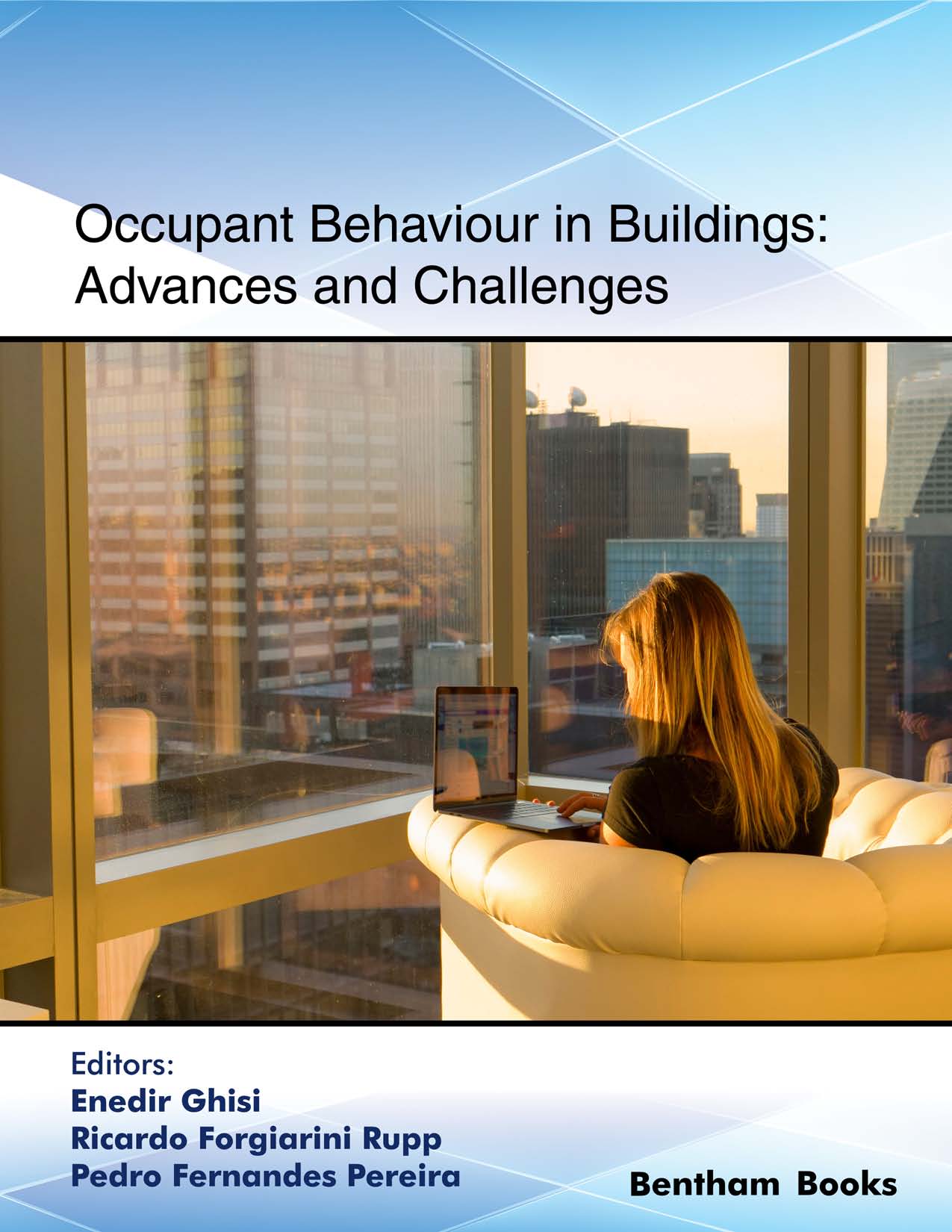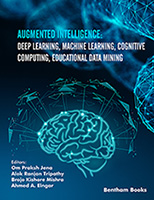Occupant behaviour in buildings has been a matter of concern all over the world. Buildings are responsible for a significant portion of energy consumption; therefore, improving the thermal and energy performance of such buildings requires knowledge about the variables that influence them. However, to increase the potential for improving thermal and energy performance of buildings, studies must also consider the occupant’s interactions with the built environment. The occupant behaviour influences the conditions of the internal environment through the occupation of the spaces and through the interaction with building elements, such as air-conditioning, lighting, blinds and windows. Thus, the objective of this e-book is to put together some of these aspects, presenting advances and challenges, by means of eight chapters written by renowned researchers.
Due to recent technological innovations related to Information and Communication Technologies (ICTs), buildings are undergoing some evolutions and incorporating technologies that endow them with intelligence. However, the requirement of building intelligence to be related to the response of the occupants’ needs leads to the consideration of the buildings as Cyber-Physical-Social Systems (CPSS). Combining technical and social dimensions in this new generation of buildings, occupants’ satisfaction and energy use can be improved. Mateus V. Bavaresco, Ricardo F. Rupp and Enedir Ghisi concluded that by enriching data collection and presentation, more professionals can access previous outcomes and adapt their practices towards achieving comfortable and energy-efficient buildings.
People’s behaviour can significantly impact both the energy consumption and the indoor thermal environment of the buildings, and of particular interest is their window opening behaviour. A better understanding of why, when and how occupants open windows is, therefore, essential in the quest to achieve low-carbon buildings. Shen Wei provided systematic criteria for selecting a suitable monitoring method for their specific research objectives. Additionally, the author demonstrates the need for a standard method for monitoring relevant influential factors, as these varied considerably between existing studies with respect to the accuracy, interval and location. Such variation clearly has the potential to influence the ability to perform cross-study comparison.
Changing and improving the heating systems have been systematically associated with a wide range of effects, such as thermal comfort and improved air quality, which are often termed as co-benefits or ancillary benefits. Literature shows that co-benefits can be decisive when users choose a heating solution. Ricardo Barbosa and Manuela Almeida used international qualitative surveys to identify, quantify and evaluate the co-benefits associated with heating solutions, to clarify the relevance of the co-benefits in the decision-making process of building users. The results suggest that both the degree of relevance and the willingness to pay for co-benefits vary significantly amongst different national contexts.
Occupancy is a paramount factor to achieve energy efficiency. The authors António Ruano, Karol Bot and Maria Ruano, proposed a new methodology to estimate the occupancy and analysed the impacts of occupants on thermal comfort and energy efficiency in buildings from two distinct sectors: residential and educational.
The knowledge of occupant actions and needs is determinant for the proper function of an intelligent building. Therefore, the building management systems (BMS) must be supplied with data from the occupants. However the data by itself does not ensure the knowledge of occupants’ needs and the ability to predict their behaviours. To do that, BMSs must be gifted with artificial intelligence (AI) and machine learning (ML) techniques to data mine the information provided by the monitoring systems. Pedro F. Pereira and Nuno M. M. Ramos compared methodologies used to detect occupant actions and occupants’ needs in the same case study. The compared methodologies have the ability of self-learning and, therefore, can the used in multiple circumstances.
The variability of human behaviour is not taken into account in many thermal and energy performance studies, causing inconsistencies between simulation results and reality. One of the reasons for these inconsistencies also relies on adopting an opening availability schedule which is strictly limited to the occupancy schedule of a room, especially in residential buildings. Aline Schaefer, João Vitor Eccel and Enedir Ghisi studied the dependency relationship between the room’s occupancy schedule and the operation of openings in low-income houses in Florianópolis, southern Brazil. The main result has shown that the opening operation schedule often does not depend on whether the room is occupied or not and seems to rely more accordingly to a daily routine, such as the time one wakes up or goes to sleep, or leaving and coming back home.
The gap between the estimate and actual thermal and energy performance is directly and indirectly attributed to occupants. To address such issue, Arthur Santos Silva investigated the uncertainties of occupant behaviour in building performance simulation through a probabilistic approach. The author showed that the number of occupants, the schedules of occupancy of the bedrooms, the setpoint temperatures for operating the openings, the cooling setpoint of the Heating, Ventilation and Air-Conditioning system (HVAC) and the limits for operative temperatures of the rooms were the most influent variables for the thermal and energy performance, especially in the heating period. The uncertainty was up to 65.6% for estimating the degree-hours for heating (in the natural ventilation mode) and up to 59.3% for estimating the total electricity consumption with HVAC (in the hybrid ventilation mode), indicating that these operational uncertainties had a great impact on the simulation results.
Cultural heritage plays an important role in society, not only in cultural terms but also due to its touristic interest. However, it is necessary to ensure that conservation and comfort conditions are not affected, since the human body releases heat, moisture, CO2 and odours. Hugo Entradas Silva and Fernando M. A. Henriques analysed the impact of the binomial ventilation vs. occupancy, simulating various combinations of ventilation and air recirculation on the indoor air quality, conservation and energy consumption in museums. Since the visits to major national museums take usually long periods, the concept of adaptation was analysed to reduce the airflow of fresh air per visitor.
Chapter 1, written by Mateus V. Bavaresco (of the Federal University of Santa Catarina, Brazil), Ricardo F. Rupp (of Technical University of Denmark) and Enedir Ghisi (of the Federal University of Santa Catarina), explores the potentials of combining objective information gathered from technological innovations with subjective inputs obtained through qualitative methods in occupant behaviour research.
Chapter 2, written by Shen Wei, of the University College London, UK, introduces existing methods that have been used to monitor occupant window opening behaviour in buildings based on a comprehensive literature review. The author also points out relevant influential factors and discusses the advantages and disadvantages of each method.
Chapter 3 was written by Ricardo Barbosa and Manuela Almeida of the Department of Civil Engineering of the University of Minho, Portugal. The authors support the decision-making process of building users in the selection of energy-efficient heating solutions by identifying and evaluating co-benefits.
Chapter 4, written by António Ruano, Karol Bot, Maria da Graça Ruano of University of Algarve, Portugal, studied the impact of occupants in thermal comfort and energy efficiency.
Chapter 5, written by Pedro F. Pereira and Nuno M. M. Ramos of the Faculty Engineering of the University of Porto, Portugal, compared different machine learning techniques used for the detection of occupant actions in buildings and the drivers of their behaviour.
Chapter 6 was written by Aline Schaefer, João V. Eccel and Enedir Ghisi, of the Federal University of Santa Catarina, Brazil. The authors investigate the dependency relationship between the room’s occupancy schedule and the operation of openings in low-income residential buildings.
Chapter 7, written by Arthur S. Silva, of the Federal University of Mato Grosso do Sul, Brazil, investigates the uncertainties of occupant behaviour in building performance simulation through a probabilistic approach.
Hugo Entradas Silva and Fernando M. A. Henriques, of the Department of Civil Engineering, Faculty of Science and Technology, Portugal, wrote Chapter 8. The authors analyse the impact of ventilation on conservation, human health and comfort in museums.
We would like to thank all the authors who have contributed to this e-book, and the editorial team for their valuable work and completion of this e-book.
The views and opinions expressed in each chapter of this e-book are those of the authors.
Enedir Ghisi
Federal University of Santa Catarina
Department of Civil Engineering
Laboratory of Energy Efficiency in Buildings
Florianópolis-SC
Brazil
Ricardo Forgiarini Rupp
Technical University of Denmark
Department of Civil Engineering
International Centre for Indoor Environment and Energy
Kongens Lyngby
Denmark
&
Pedro Fernandes Pereira
University of Porto
Department of Civil Engineering
Building Physics Laboratory
Portugal





